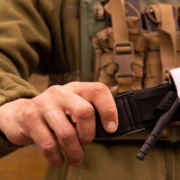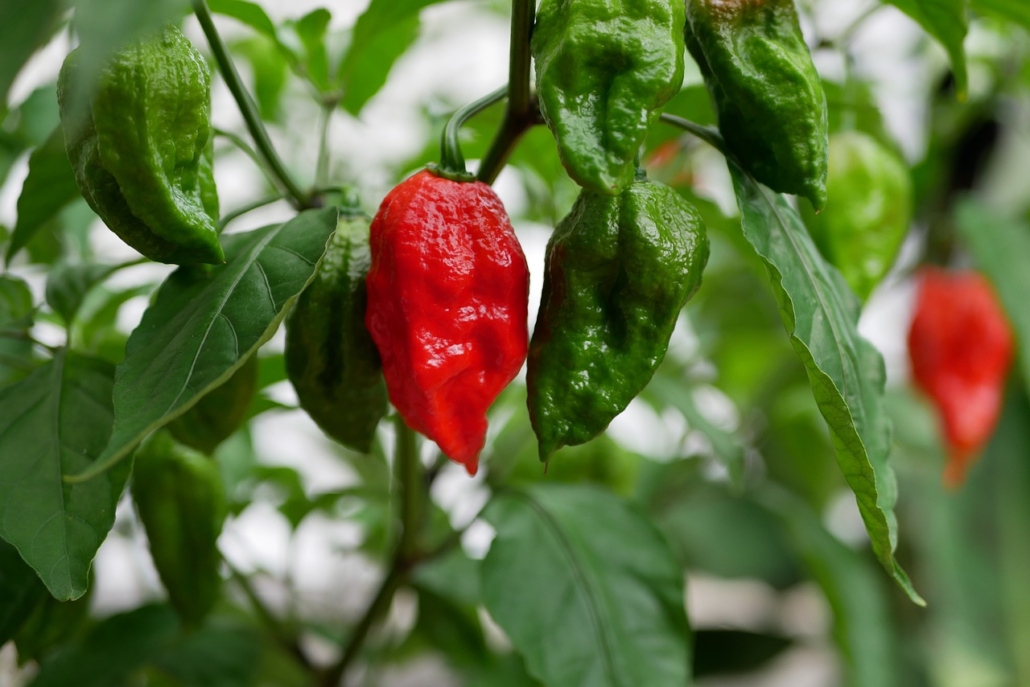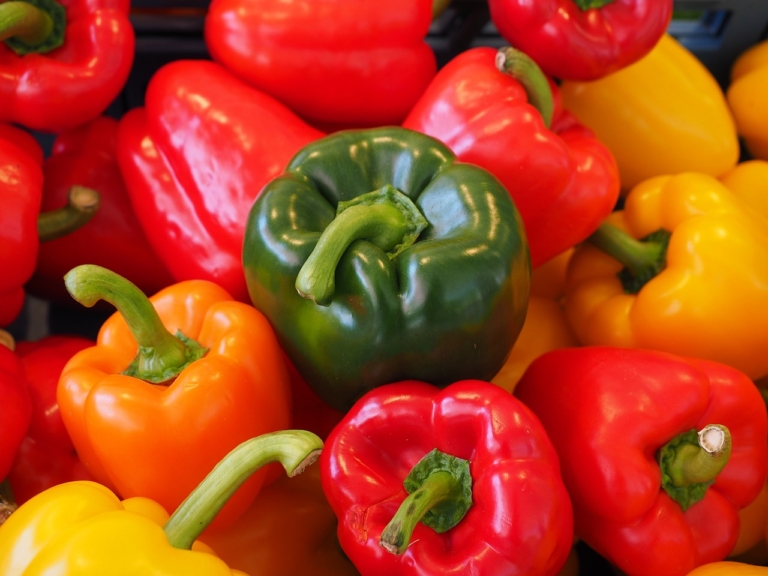Delicious Peppers!
Peppers are a great option for anyone looking to start a garden this summer. Not only are they relatively easy to grow, but they are also very versatile and can be used in a variety of dishes. There are many different types of peppers to choose from, including sweet bell peppers, spicy jalapenos, and even exotic varieties like habaneros and ghost peppers. Peppers also have some health benefits, as they are good sources of vitamins and antioxidants. They can be grown in containers or in a traditional garden bed, making them a great choice for people with limited space or those who live in urban settings. Overall, peppers are a low-maintenance crop that can add flavor and nutrition to your meals all summer long.
Cultivating Your Pepper Plants
Plants should be started from seed (using Seed Starter Trays) two to three months before the last day of your spring frost if you want to cultivate unusual kinds, which include some of the best peppers. Start seeds indoors in a sunny, warm environment (about 85 degrees) with slightly wet soil. Before planting, pepper seedlings benefit from being moved into a bigger container. Before planting, gradually acclimate seedlings to outdoor conditions for about a week.
You have two options for getting pepper transplants: ordering them through the mail or visiting a garden center. However, it’s essential to be patient and avoid planting seedlings outside too soon after frost, as it could stunt their growth. If you have a short growing season, it’s best to plant them immediately. To thrive, peppers require abundant sunlight and a long growing season. If you live in colder climates, you can use row covers to warm up the plants and choose fast-maturing types with a “days to maturity” label. Although peppers can be grown anywhere, even in Alaska, they are perennial plants that you can pot and bring indoors during fall. They will survive the winter and sprout new leaves in the spring.
Fertilizing Your Pepper Plants
Plants should be buried in holes that are dug so they sit approximately an inch deeper than they did in their starter pots. But you can also grow your pepper plants in bigger containers (3-5 gallons); as a matter of fact, many pepper growers do. Plants should be spaced 1 1/2 to 3 feet apart, with 1 1/2 to 3 feet separating rows. Peppers do well in containers as long as they get enough sunlight. All types profit from consistently moist soil that has been improved by finished compost.
Some seed sellers advise applying an organic fertilizer with a high phosphorus concentration (fertilizers are labeled with their nitrogen, phosphorus, and potassium contents) when transplanting. Avoid fertilizing pepper plants with excessive nitrogen levels since this can lower yields.
A tablespoon of Epsom salts dissolved in a gallon of water should be sprayed on leaves every two weeks to aid with fruit set, especially if temperatures are high, suggested by professional pepper producers. Many pepper planter recommends using an organic fish emulsion spray to fertilize every other week (on weeks when Epsom salts are not used). The secret to outstanding hot peppers is calcium, which can be provided by incorporating bone meal into the soil every two weeks throughout the growing season.
All Efforts Paid Off - Harvesting Peppers
Peppers usually start off as green, though a few may be light purple or yellow. As they mature, they can turn white, yellow, orange, red, or even dark purple or black. Over time, they develop a variety of flavors and nutrients. While you can eat them at any stage, waiting to harvest them can save you money. If you want to harvest brilliant red peppers earlier in the growing season, consider growing bell pepper varieties like Lipstick and Gypsy that require fewer days to mature. Harvesting the first few fruits as soon as possible can stimulate greater output.
When selecting seeds from open-pollinated peppers (those that produce parent plants), choose the largest ones and let them air dry. Store the seeds in a dark, cool, dry location, such as in basement storage containers with lids or opaque seed packs. If you prefer, you can store them in the refrigerator, but be sure to seal them in a container to prevent humidity from spoiling them.
Hot And Sweet Peppers
Before planting, it’s important to decide which peppers you want to grow – sweet, hot, or a mix of both. Sweet peppers, such as bell, pimento, marconi, shishito, and habanada, come in various sizes and colors and are relatively easy to cultivate. On the other hand, hot peppers like jalapeno, cayenne, and habanero can range from mildly spicy to extremely hot.
The Fish pepper is an extraordinary plant with stunning green and white variegated leaves and fruits that boast “racing” stripes. African-American chefs from Philadelphia, Boston, and Washington, D.C., used this pepper variety in fish sauces during the late 1800s. Its unique characteristics make it one of the most remarkable pepper plants ever encountered.
If you’re looking for versatile peppers, Jalapenos are a great choice due to their thick flesh, making them perfect for stuffing, roasting, and grilling. For those who prefer a pepper that grows quickly, sweet Cubanelles are a good option. If you’re a fan of spicy peppers, you can’t go wrong with the Butch T. Trinidad Scorpion, which was declared the “Hottest Pepper in the World” as of June 4, 2011, with a Scoville heat rating of over 1,450,000.
On the other hand, White Habanero, Bolivian Rainbow, and Peter Pepper are lovely to admire for their beauty. For a delicious hot pepper to fry, the Italian Long Hot is a great choice that pairs well with sandwiches and pizza. Bolivian Rainbow and Peter Pepper are lovely to admire for their beauty. For a delicious hot pepper to fry, the Italian Long Hot is a great choice that pairs well with sandwiches and pizza.
After All, It's Done...
Growing peppers can be a fun and rewarding experience. As you watch your pepper plants grow from tiny seedlings to mature plants, you’ll be filled with a sense of satisfaction. But the real excitement comes when it’s time to harvest your peppers. Whether you’re growing mild bell peppers or spicy jalapeños, you’ll feel a sense of pride as you pluck each fruit from the plant. And the best part? You get to enjoy the fruits of your labor! Whether you’re using your harvested peppers in meals, preserving them for future use, or giving them away to family and friends, there’s something special about eating food you’ve grown yourself. So, whether you’re a seasoned gardener or a newbie, why not try growing some peppers this year? You’ll be glad you did!




